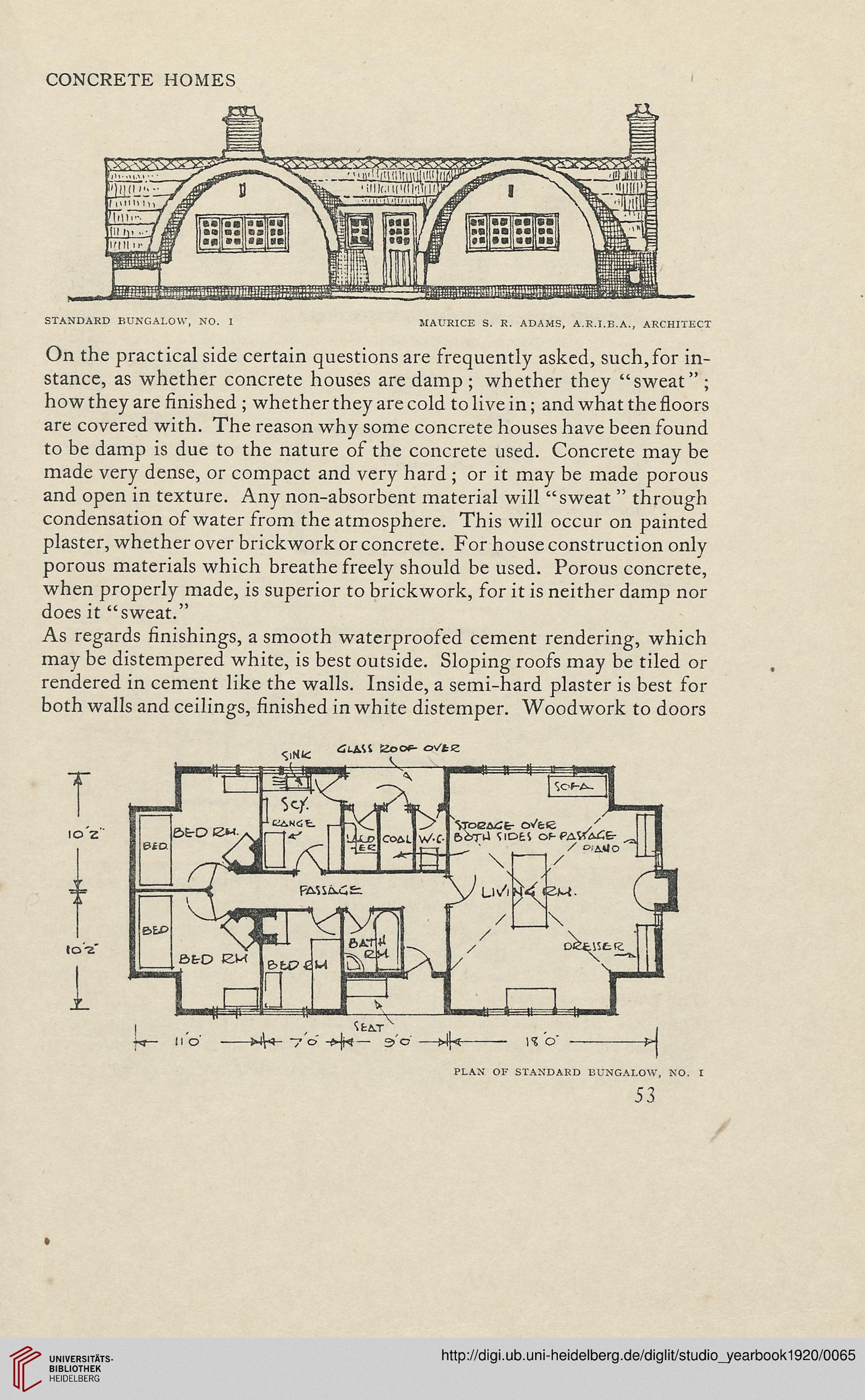CONCRETE HOMES
On the practical side certain questions are frequently asked, such,for in-
stance, as whether concrete houses are damp; whether they “sweat”;
how they are finished ; whether they are cold to live in; and what the floors
are covered with. The reason why some concrete houses have been found
to be damp is due to the nature of the concrete used. Concrete may be
made very dense, or compact and very hard ; or it may be made porous
and open in texture. Any non-absorbent material will “sweat ” through
condensation of water from the atmosphere. This will occur on painted
plaster, whether over brickwork or concrete. For house construction only
porous materials which breathe freely should be used. Porous concrete,
when properly made, is superior to brickwork, for it is neither damp nor
does it “sweat.”
As regards finishings, a smooth waterproofed cement rendering, which
may be distempered white, is best outside. Sloping roofs may be tiled or
rendered in cement like the walls. Inside, a semi-hard plaster is best for
both walls and ceilings, finished in white distemper. Woodwork to doors
On the practical side certain questions are frequently asked, such,for in-
stance, as whether concrete houses are damp; whether they “sweat”;
how they are finished ; whether they are cold to live in; and what the floors
are covered with. The reason why some concrete houses have been found
to be damp is due to the nature of the concrete used. Concrete may be
made very dense, or compact and very hard ; or it may be made porous
and open in texture. Any non-absorbent material will “sweat ” through
condensation of water from the atmosphere. This will occur on painted
plaster, whether over brickwork or concrete. For house construction only
porous materials which breathe freely should be used. Porous concrete,
when properly made, is superior to brickwork, for it is neither damp nor
does it “sweat.”
As regards finishings, a smooth waterproofed cement rendering, which
may be distempered white, is best outside. Sloping roofs may be tiled or
rendered in cement like the walls. Inside, a semi-hard plaster is best for
both walls and ceilings, finished in white distemper. Woodwork to doors




